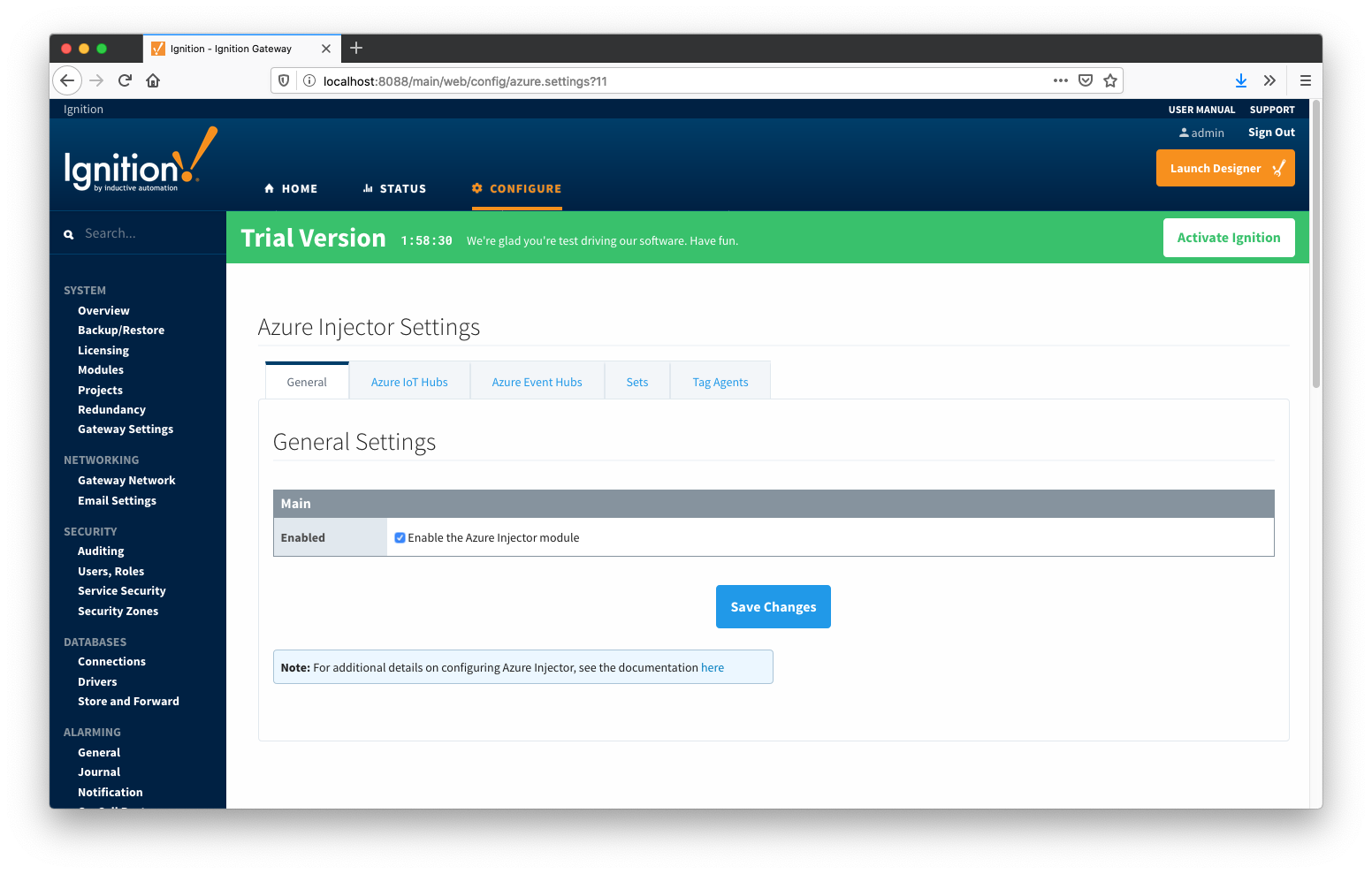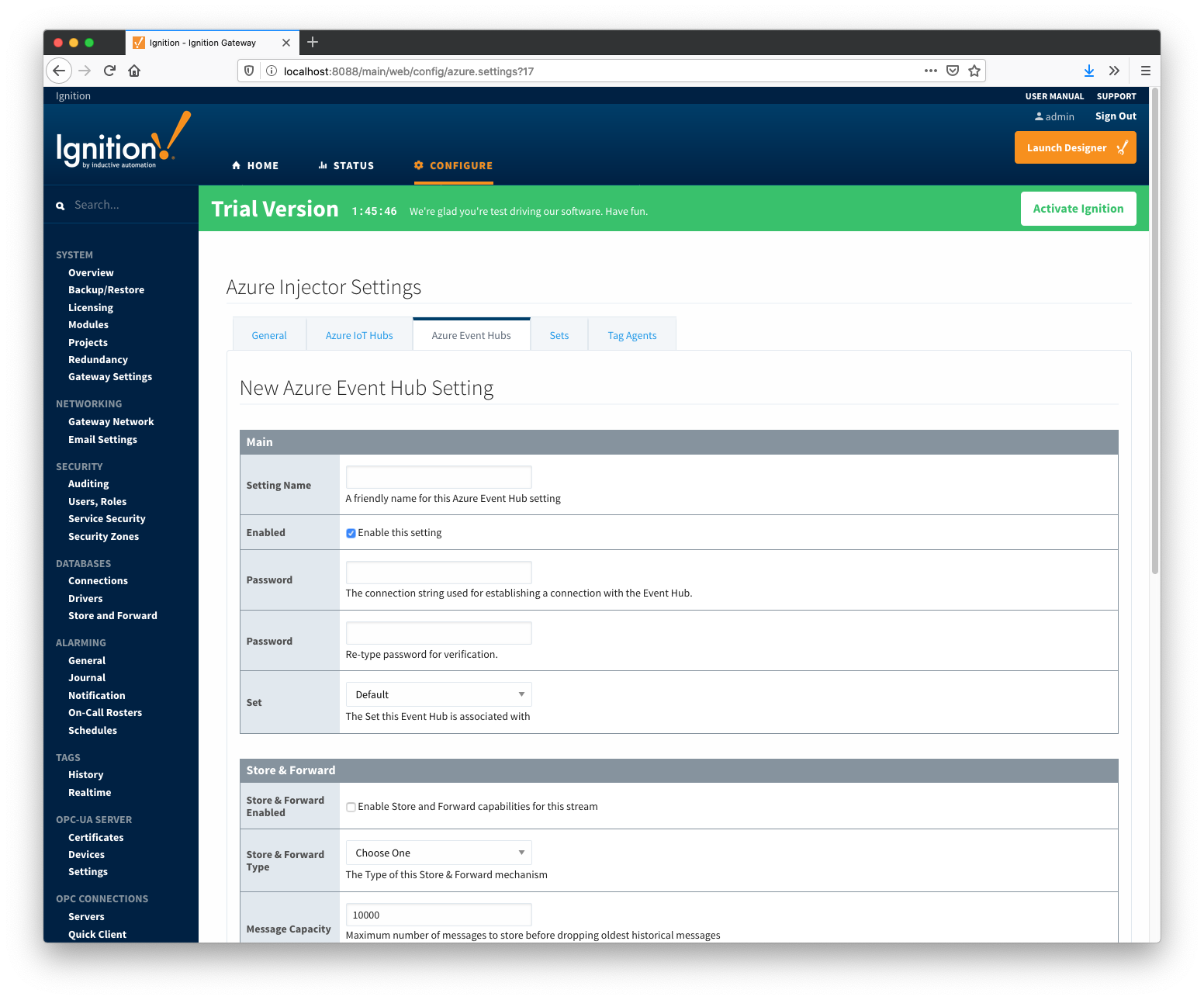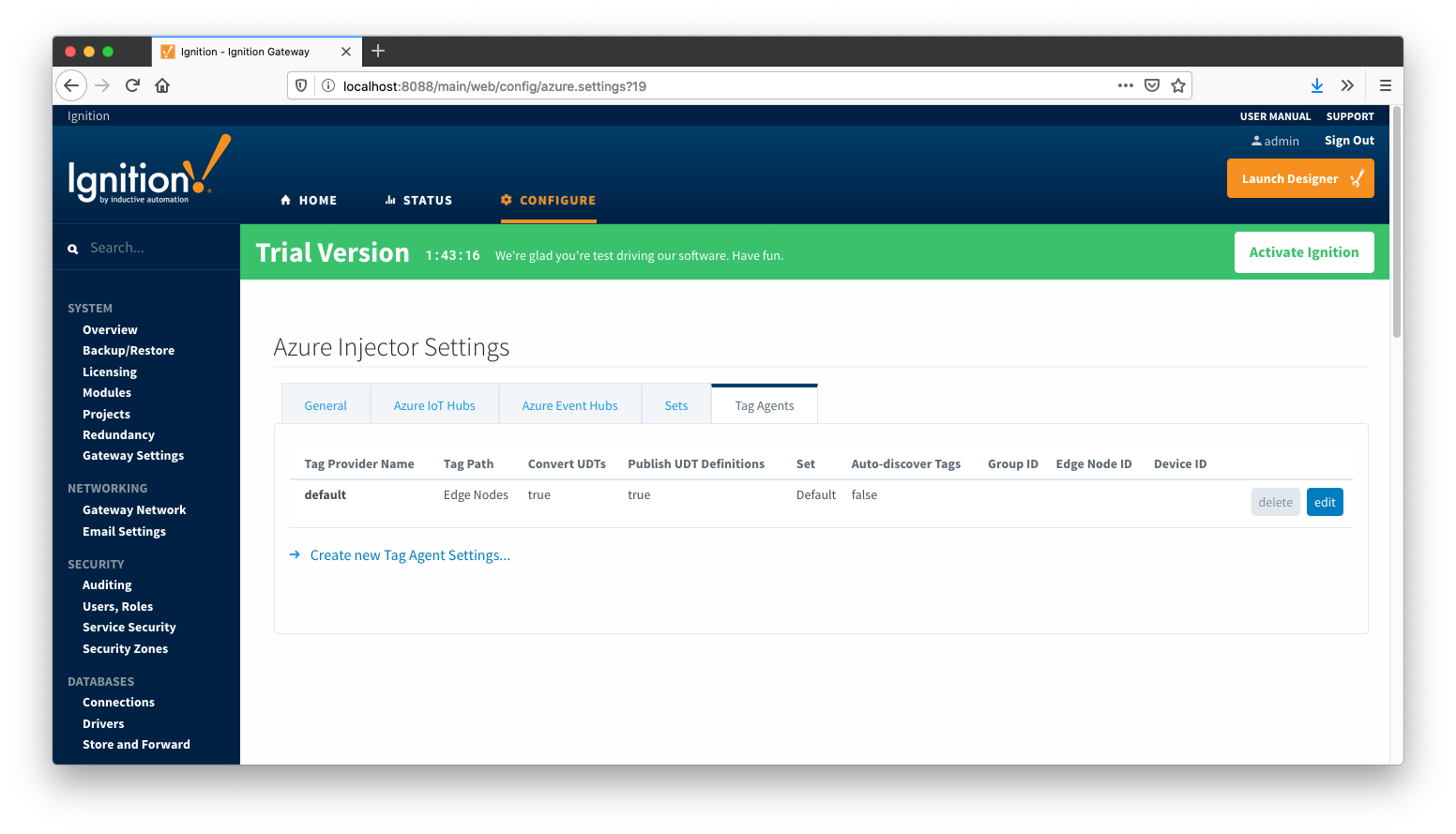...
The first tab contains the general settings for the Azure Injector module.
 Image Modified
Image Modified
The general configurations options available on this tab are listed below:
...
The next tab is the list of Azure IoT Hub endpoints that the module should connect to to push tag data.
 Image Modified
Image Modified
One or more Azure IoT Hub endpoints can be configured on this tab. The configuration options for an Azure IoT Hub connection are listed below.
...
- Setting Name
- This is a friendly name of the Azure IoT Hub used to easily identify it. This must also be unique.
- Enabled
- Whether or not pushing to this IoT Hub is enabled or not.
- Password/Connection String
- This is the Azure IoT Hub connection string used to connect. This string can be one of the following:
- An IoT Hub connection string with the following format:
- HostName=<Host Name>;SharedAccessKeyName=<Key Name>;SharedAccessKey=<SAS Key>
- An IoT Hub's Event Hub-compatible connection string with the following format:
- Endpoint=<ENDPOINT>;SharedAccessKeyName=<Key Name>;SharedAccessKey=<KEYVALUE>
- An IoT Hub device connection string with the following format:
- HostName=<Host Name>;DeviceId=<Device Name>;SharedAccessKey=<Device Key>
- Note: If using MQTT as the protocol (next section), this is the connection string format that must be used.
- Protocol
- The protocol to use when connecting to the Azure IoT Hub. It can be one of the following:
- MQTT
- Note: If using MQTT as the protocol, the connection string (previous section) must be a 'device' connection string.
- Others may be available in the future
- Set
- The Set to associate this Azure IoT Hub connection with.
- Certificates
- The server certificates to use if required.
Store & Forward
- Store & Forward Enabled
- Whether to enable Store & Forward capbilities for this endpoint
- Store & Forward Type
- The type of the Store & Forward mechanism
- Message Capacity
- The Maximum number of messages to store before dropping the oldest historical messages
- Flush Period
- The period of time to wait (in milliseconds) between sending when flushing messages
...
Clicking on the "Create new Azure IoT Hub Setting..." link will bring up the following form for adding a new Azure IoT Hub endpoint.
 Image Removed
Image Removed Image Added
Image Added
Azure Event Hubs
The next tab is the list of Azure Event Hub endpoints that the module should connect to to push tag data.
 Image Modified
Image Modified
One or more Azure Event Hub endpoints can be configured on this tab.
...
Clicking on the "Create new Azure Event Hub Setting..." link will bring up the following form for adding a new Azure Event Hub endpoint.
 Image Modified
Image Modified
Sets
The Sets tab contains a list of Azure Sets. Each set represents a grouping of Azure IoT Hub endpoints. When a set is referenced by a Tag Agent the Agent will push Tag data to all Azure IoT Hub endpoints contained within that Set. The Sets are disjoint, meaning that a single Azure IoT Hub endpoint cannot be in more than one set. Out of the box the Azure Injector module will have one "Default" set defined.
...
Tag Agents are the workers within Azure Injector that monitor tag events, convert them to a JSON representation, and push them to one or more Azure IoT Hub endpoints. Out of the box the Azure Injector module will have one "default" Tag Agent defined.
 Image Modified
Image Modified
Tag Agents are configured to point to a single folder. All Tags within that folder will be monitored by the Tag Agent.
...
![]()
![]()
![]()
![]()
![]()
![]()
![]()
![]()
![]()
![]()






